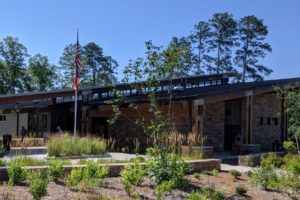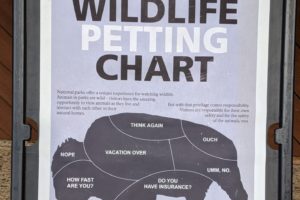As we started traveling in 2025, our first goal was to visit our family in south Florida, but of course we had a couple of stops before we could get to where they live. One of our stops is staying with friends near Orange City, FL. Since they were busy during the day, we drove the few miles to Blue Springs State Park–the winter home of the manatees. We’ve been here before, but haven’t shown you many pictures of what’s available to see. Today’s the day.


The most they’ve ever counted was over a 1000 a year ago last winter.

These mammals need a constant temperature of 72 degrees provided by an underground boil. So what’s a boil when it’s associated with manatees?
Here’s some information from the Harvard Review: “By late January the manatees have swum up the St. John’s River to a warm spring in central Florida. A ring of such springs comes up from the vast Florida aquifer, rising at the edges of an uneven circle around the limestone under the land between Daytona and Gainesville. The place where the water comes up is called “the boil,” as if the heat and rumble of the earth’s core had forced it up against gravity. In fact, it’s a very gentle motion, a quiet flowing movement, transparent water spreading out into a strong current, so clear that the algae living beneath it turn the whole stream a brilliant, glowing green, and the submerged manatees become great quiet green blimps until they rise slowly to the surface. Then their gray, leathery skins make apparent the patterning of sunlight on the water’s surface, a wide net constantly in motion. The unruffled beast ruffles the surface briefly with its rudimentary snout, breathing and then sinking down into green again.”
Why is this temperature important? Here’s some information from the park’s website:
“Manatees depend on the warm water for survival, as they cannot tolerate water temperatures colder than 68 degrees for long periods of time. Although manatees look “fat” or “blubbery,” they only have about an inch of fat and a very slow metabolism, meaning they cannot easily stay warm. This biology makes sanctuaries such as Blue Spring vital for their survival.”

tracking the manatees

A belt, tether, and a tag is the assembly used for tracking them. The belt fits around the area where the main body meets the tail. It’s designed to fall off after a period of time and doesn’t affect the mammals natural behavior or movement.


So what is a Florida manatee? They are mammals that breathe air like other mammals. Much of their time they live underwater: 15 to 20 minutes when at rest and 6-8 hours a day to feed by tearing off plants with its flexible upper lip. When they resurface to breathe, they stay up for 2 to 4 minutes.

Manatees are a subspecies of the West Indian manatee. Florida manatees are an endangered species native to Florida. They can live in fresh, brackish, or salt water habitats, including rivers, springs, harbors, bays, and inlets in Florida.
A number of these slow-moving creatures are injured or killed by motorboats each year, and most have scars from past collisions. Others are killed when caught in flood gates and navigation locks, or when they eat or get entangled in discarded monofilament fishing line or hooks.

Of course increased development and human population growth along the coast have eliminated their feeding areas. Areas such as Blue Spring State Park helps to keep them safe. Natural factors like cold weather and their own low reproduction rate threaten the future of this native species.

More than 44 fish species are found in Blue Springs, and the most common are pictured here.



To see some of the scenic beauty William Bartram found in the 1700s, paddling boats can be launched from landing sites on the map for a nice day trip. Many of the passages from his book Travels are about this region of Florida.


Looks like a nice place for a weekend in nature.





Leave a Reply
Your email is safe with us.